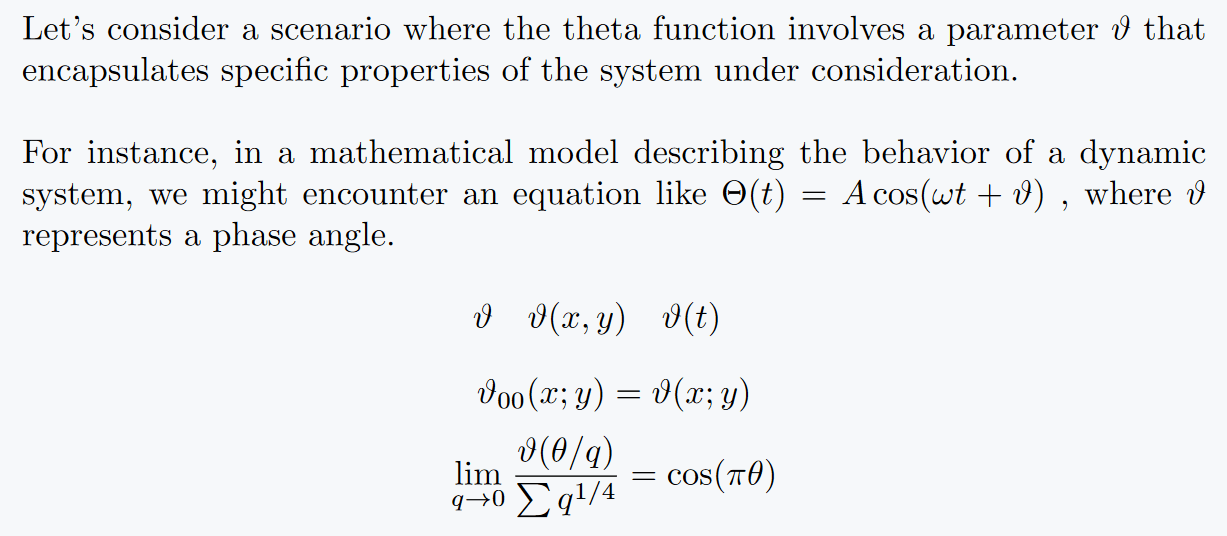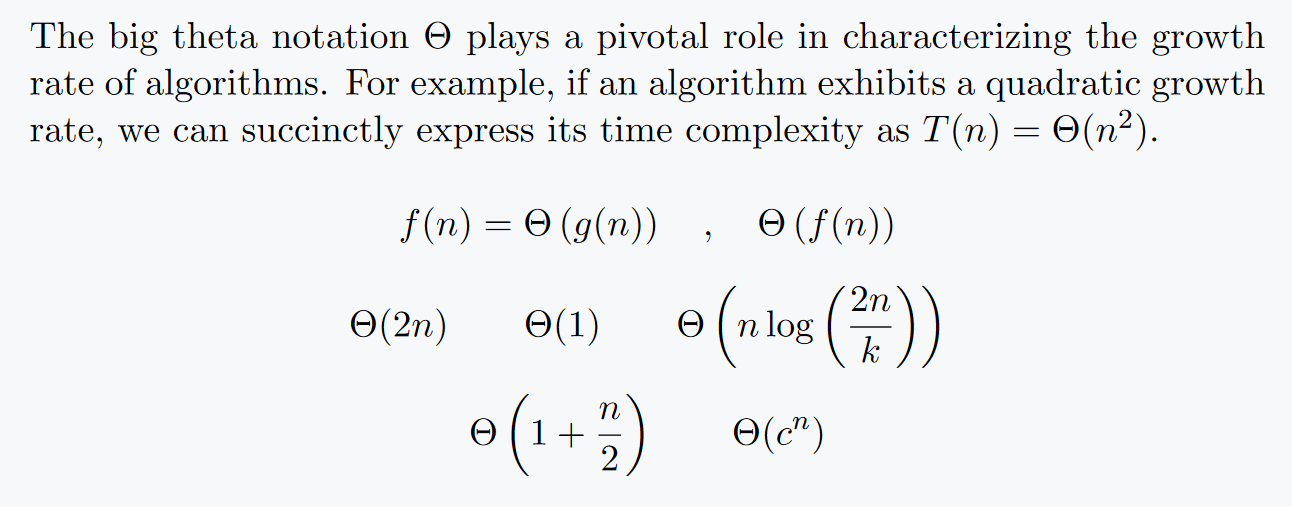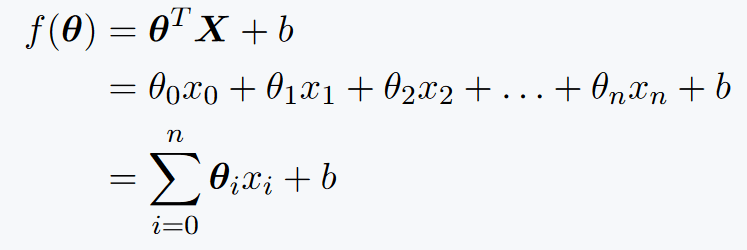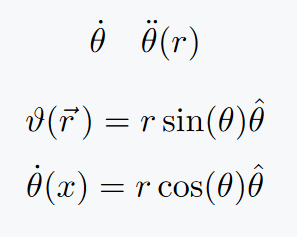In mathematical notation, theta (θ) symbols play a crucial role in representing angles and variables. This article explores the use of small theta (θ), variant theta (𝜗), and big theta (Θ) symbols in LaTeX.
Use of small theta like θ
Small theta (θ) is commonly used to represent angles in mathematical expressions. In LaTeX, you can include \theta command for inline and display mode.
\documentclass{article}
\begin{document}
\[\sum_{i=1}^r\frac{1}{2}r(\theta_i)^2\Delta\theta,\quad \frac{d\vec{r}}{d\theta}= \frac{dr}{d\theta}\hat{e}_{r}+r\hat{e}_{\theta}\]
\[\begin{pmatrix} 0 & -d\theta \\ d\theta & 0 \end{pmatrix} \left|\frac{\partial r}{\partial \theta}\right| =r\]
\end{document}
\[\sum_{i=1}^r\frac{1}{2}r(\theta_i)^2\Delta\theta,\quad \frac{d\vec{r}}{d\theta}= \frac{dr}{d\theta}\hat{e}_{r}+r\hat{e}_{\theta}\]
\[\begin{pmatrix} 0 & -d\theta \\ d\theta & 0 \end{pmatrix} \left|\frac{\partial r}{\partial \theta}\right| =r\]
Use of var theta like 𝜗
Variant theta (ϑ) is a specialized form of theta that can be employed for distinct purposes. For this, use \vartheta command.
\documentclass{article}
\begin{document}
\noindent Let's consider a scenario where the theta function involves a parameter $\vartheta$ that encapsulates specific properties of the system under consideration. \\
\noindent For instance, in a mathematical model describing the behavior of a dynamic system, we might encounter an equation like $\Theta(t)=A\cos(\omega t + \vartheta)$ , where $\vartheta$ represents a phase angle.
\[\vartheta \quad \vartheta(x,y)\quad \vartheta(t)\quad\]
\[\vartheta_{00}(x;y)=\vartheta(x;y)\]
\[ \lim_{q \to 0}\frac{\vartheta(\theta/q)}{\sum{q^{1/4}}}= \cos(\pi\theta)\]
\end{document}Output :
Big theta in latex like Θ
Big theta (Θ) notation is frequently utilized in computer science to describe the time complexity of algorithms. It represents the upper and lower bounds of the growth rate. In LaTeX, use \Theta command for this symbol.
\documentclass[11pt]{article}
\begin{document}
\noindent The big theta notation $\Theta$ plays a pivotal role in characterizing the growth rate of algorithms. For example, if an algorithm exhibits a quadratic growth rate, we can succinctly express its time complexity as $T(n)=\Theta(n^2)$.
\[ f(n)=\Theta\left(g(n)\right) \quad,\quad \Theta\left(f(n)\right) \]
\[\Theta(2n) \qquad \Theta(1) \qquad \Theta\left(n\log\left(\frac{2n}{k}\right)\right)\]
\[ \Theta\left( 1 + \frac{n}{2}\right) \qquad\Theta(c^n) \]
\end{document}
Output :
Use bold style
In this case, we will use \mathbf command. But, this command cannot change shape of symbol. It would be correct to use \boldsymbol command instead of \mathbf.
\documentclass{article}
\usepackage{amsmath}
\usepackage{bm} % for bold math symbols
\begin{document}
\begin*{align}
f(\bm{\theta}) &= \bm{\theta}^T \bm{X} + b \\
&= \theta_0 x_0 + \theta_1 x_1 + \theta_2 x_2 + \ldots + \theta_n x_n + b \\
&= \sum_{i=0}^{n} \boldsymbol{\theta}_i x_i + b
\end*{align}
\end{document}Output :
Dot theta and hat theta symbol
In LaTeX, you can create symbols with dots or hats(caps) above them using the \dot{arg} and \hat{arg} commands.
\documentclass{article}
\begin{document}
\[\dot{\theta}\quad \ddot{\theta}(r)\]
\[\vartheta(\vec{r}\,)=r\sin(\theta)\hat{\theta}\]
\[\dot{\theta}(x)=r\cos(\theta)\hat{\theta}\]
\end{document}Output :
Conclusion
The default variant is used in this tutorial. You can take help of an external package if you want. In which there are various commands to represent theta symbols.



